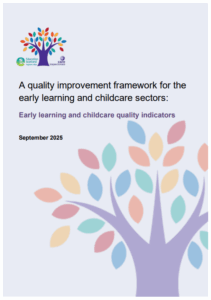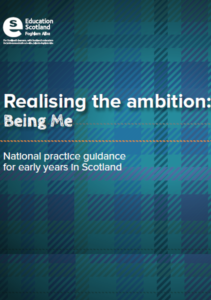Children experience high quality spaces p20 – Quality, safety and maintenance of spaces
Our physical environment, whether offered indoors or outdoors, is welcoming, fully meets children’s needs, and is well equipped….We make the best use of available resources to create, sustain and enhance a motivating physical environment.
Children engage in a broad range of challenging and interesting play opportunities that support and extend their development and learning. Through these experiences children build self-confidence
Children experience high-quality spaces p22 – Children influence and affect change
Carefully selected and well-positioned furniture and resources support all children to make choices and freely play. Resources and materials available to children are varied, adaptive and responsive, catering to children’s individual abilities, needs and interests. We understand the positive impact that rich, multi-sensory play has on children’s learning, resilience and wellbeing.
p25
To what extent does the physical environment support different types of play?
How can we be confident that our physical environment maximises opportunities for children to be challenged, creative and engaged in their play?
How well are children enabled to select and make use of high-quality resources which meet their needs, interests and development?
Playing, learning and developing p27 – Children’s engagement
Children make informed choices about their play and learning within a creative, challenging and enabling environment….. We are skilled at using high-quality interactions, spaces and experiences to extend and sustain children’s interests.
Playing, learning and developing p28 – Quality interactions
Our children have frequent, appropriate opportunities to develop their thinking and problem-solving skills through imaginative play and storytelling. This helps children to extend their own thinking, practise new skills and consolidate their learning in ways which are meaningful to them.
Playing, learning and developing p31 – Challenge questions
How do we maximise opportunities for children to be challenged, creative and engaged in their play and learning?
How well do we support and encourage children’s natural curiosity, creativity and problem solving?
Learning, teaching and assessment p39 – Children’s learning and engagement
Our children are motivated and sustain engagement as they interact purposefully with a rich range of challenging and open-ended opportunities across the curriculum. We are highly effective in using the environment to support children’s learning. Children explore, experiment, and develop curiosity and creativity through a wide range of high-quality resources and spaces


